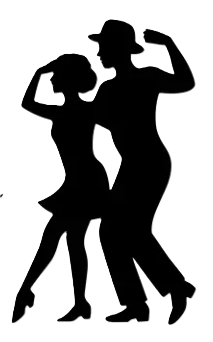
Krause Dance Lessons
Salsa – on One will include the basic steps and the following dance moves.
- Side Step / Side Break
- Back Breaks
- Cross over Breaks
- Ladies Slow / Fast Turns
- Couples Turns
- Catwalk
- Open Breaks
- Side Cross Over
- and more!!
Join us for an exhilarating alternative to the same old monotonous gym routine and learn to Salsa.
What is Salsa!
Salsa is a high energy dance that improves cardiovascular health, stamina and flexibility without feeling like a chore.
Who should learn Salsa!
Salsa on 1 is a good dance style for beginning dancers to learn and is a favorite among dancers.
We have taught youth in their teen years to adults in their 80’s and above.
Requirements will be able to walk at a brisk pace and want to learn to dance.
Salsa on 1 is a dynamic, vibrant dance characterized by its energetic footwork, rhythmic movements to the music and fluid turns, incorporating a “quick, quick, slow” rhythm.
Unlike other forms of Salsa Salsa on 1 mimics the Cha Cha, with just a simple change in the footwork, you can interchange the moves from Salsa on 1 to the Cha Cha depending on the music.
Salsa Music
Salsa can be performed to familiar music like Brown eyed girl, Margaritaville and Under the Boardwalk.
History of Salsa on 1
Salsa On1, also known as Los Angeles style, developed in the 1990s from Mambo and other influences, gaining prominence through dancers and instructors like Joby Martinez and Johnny Vazquez. It is a linear and often more energetic style, characterized by the basic step being danced on beat one of the music. It differs from the New York On2 style, which is a direct evolution of the Palladium era Mambo and focuses on the second beat.
Characteristics
- Linear style: On1 is a linear dance style.
- Timing: The basic step is danced “on 1,” meaning the dancer steps on the first beat of the music.
- Expression: It is often associated with a more outward, energetic, and performative style, with a greater emphasis on spins, dips, and footwork.
- Beginner-friendly: It is often considered easier for beginners to learn because the basic step is aligned with the first, most prominent beat of the music.
What is the difference between Cuban salsa and regular salsa?
On the one hand, the line salsa, as its name implies, is danced in line (the girl moves along an imaginary line on the floor and the boy exchanges positions with her while they dance) and the Cuban salsa is danced in circles (while dancing in pairs the two dance around as if drawing an imaginary circle on the floor, .
What is On1 and On2? << Link to article>>
No, they’re NOT exactly the same steps. They’re the same order of steps, but with different orders of quick and slow. On1 dances break (quick), in place (quick), in place (slow). On2 dances in place (~quick), break (quick), in place (slow). The first quick (in place) in on2 is often anticipated by a little. Mar 20, 2018
What country invented salsa?
AI Overview
Salsa has multiple origins, with Cuba and Puerto Rico being the cultural birthplace of the dance and music style, which then evolved in New York City. The roots of the dance are in earlier Cuban music like son Cubano, and it was shaped by African rhythms and European influences. The name “salsa” became widely associated with the genre during the 1960s and 1970s in New York, where musicians and dancers of Puerto Rican and Cuban descent fused various Caribbean styles to create the modern form.
- Cultural Origins: The foundation of salsa music comes from a blend of Afro-Caribbean rhythms and European musical styles that developed in Cuba and Puerto Rico.
- Cuban Influence: Early Cuban music, particularly Son Cubano, is a key precursor to salsa, with genres like mambo and danzón also playing a significant role.
- Evolution in New York: As Puerto Rican and Cuban immigrants moved to New York City, they brought their music and dance traditions, leading to the fusion and evolution of these styles in the city’s vibrant Latino communities.
- The Modern Genre: The term “salsa” as it is known today emerged in the 1960s and 1970s in New York City, with a major explosion in popularity driven by groups like the Fania All-Stars
